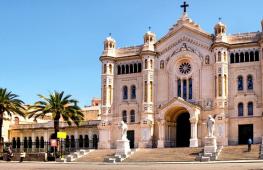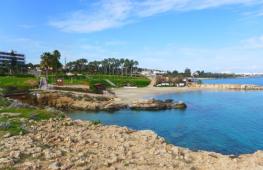Cogg ship Hanseatic three-masted cogg XV century
Hanseatic coggs were, as a rule, single-masted, but in the second half of the 14th century a type of three-masted cogg appeared - hulk, or halq.
The average assembly time for one vessel is estimated to be three years. The main building material is oak wood. Massive structural elements (beams) were sawn from oak trunks, and not cut down, as in Viking ships. For the thickest beams, low grade wood was used, which significantly reduced the overall cost, and, accordingly, the durability of each ship.
Straight keel, short hull - the ratio of keel length to hull width was approximately 3:1. An almost straight, rather steep sternpost, as well as a high-mounted plank hull of the ship with clinker (“covered”) plating and an open deck.
In the 12th century, cogs - for the first time in the history of European navigation - had a rudder attached to the sternpost, equipped with a tiller. Before this, the steering oar served as the rudder of the ship.
A characteristic feature of the coggs was the high, crenellated superstructure on the forecastle and poop, designed to accommodate an armed crew, slingers and archers and crossbows. The North European cogs had one mast, with one straight sail.
A characteristic feature of the cogg is the hinged rudder. Superstructures with crenellated fencing for protection were built at the bow and stern of the ship; soldiers and guns were housed in them. If there is a keel, the vessel is practically flat-bottomed, due to the increased width of the middle part of the hull.
Kogg - the main type of ship of the Hanseatic League. This is a high-sided, decked, single-masted (later double-masted) vessel with a powerful hull. A characteristic feature of the cogs is a hinged rudder and straight stems, strongly beveled towards the keel line. The maximum length of the vessel is 30 m, waterline length is 20 m, width is 7.3 m, draft is 3 m, load capacity is up to 200 tons.
A straight rack sail with an area of 180-200 m2 was raised on a mast made up of several logs collected and fitted into a single trunk. The aft superstructure (sterncastle) was structurally connected to the hull. A platform with a jagged fence was attached to the sternpost. The stern area occupied about half the length of the ship. Below it there was a room with an entrance from the deck, and cabins, in the side walls of which windows were sometimes cut. The stem ended with an inclined mast - a bowsprit, which served to stretch the sail in front. The Koggs of the Hanse had a great influence on the development sailing ships Northern Europe.
The model was assembled in 2012 (production time 4 months), my second model. The material is seasoned oak (more than 50 years old - used parquet). Scale 1:50. Dimensions of the model: length 600 mm, height 650 mm, width 320 mm. A cut was made on board to view the interior..... since the ship is a merchant ship, it has a hold with cargo - barrels, bales, bags.........
You can see more details on the neighboring forums - Parus, Free Swimming, Serikoff.
Bremen Cogg
In the 13th century. On the territory of Europe, a unique “interstate formation” arose - the Hanseatic League (abbreviated as Hanse, Hanse). It was a trade and political alliance of cities and guilds in Northern Europe and was called upon to protect the trade interests of its members from greedy feudal lords, all kinds of pirates and corsairs, and the desire of local authorities to profit at the expense of foreigners. IN different time The Hanseatic League included more than 200 European cities from 10 different states, and its center can be considered the free city of Lübeck.
The Hanseatics quickly achieved a dominant position in trade in the North and Baltic seas. Their merchant ships carried out a significant part of their traffic in the waters of Northern Europe - from Novgorod to London.
One of the most common types of ships in the period XIII-XV centuries. became a cogg: a strong seaworthy vessel with a high side and a small length-to-width ratio. The word "kogg", according to popular belief, comes from the ancient Germanic "Kugg" (convex). Historians tend to consider the Coggs as direct descendants of the Normans. cargo ships(primarily knorr). Indeed, there were enough common features: the keel was made from one solid tree trunk, the planking was made “overlapping”, the only mast was installed almost in the middle of the hull and carried one straight sail. However, there were also numerous differences. While Viking ships had rounded stems, the Cogga had a straight stem and sternpost. The first of them was inclined about 50° to the horizon, the second - 70-75°. A very important innovation should be considered the appearance of a rotary rudder, located in the center plane and suspended from the rudder post. The tiller was brought out into the aft superstructure or passed over the upper deck. The sail area increased noticeably, even on early cogs it was 180-200 m2 (for comparison: on the ship of William the Conqueror - about 70 m2). All sailing equipment, despite the similarity, it became not just larger, but also more advanced - bowlines appeared, the mast fastening became more reliable. Even early coggs could walk at sharper angles to the wind. The straight stem made possible the appearance of first a retractable and then a permanent bowsprit. The greatest length of the coggs was in the 14th century. reached 30 m, length along the waterline - 20 m, width - 7.5 m, draft - 3 m. The carrying capacity was also quite significant - up to 300 tons. The cogs also had superstructures. At the same time, the stern one - the aftercastle - was structurally connected to the hull and was part of it, and the bow one - the forecastle - was in some way a “slap” on the hull. On the superstructures, platforms with fencing were usually equipped, where shooters - archers and crossbowmen - were located in battle.
Bremen Cog. Modern copy
Over time, cogs turned into three-masted ships with a carrying capacity of up to 500 tons (and in some cases, even more). In the 15th century They began to install guns on them. In general, we can safely say that the thriving maritime trade of the Hanseatic League is largely due to the merits of the cogg, which proved itself to be excellent both as a warship and as a trading and fishing vessel. However for a long time very little was known about these ships. Even appearance Kogga was reconstructed mainly from images on the seals of coastal cities. An incident helped historians: in the early 1960s. In Germany, work began to expand the channel of the Weser River in the area of the port of Bremen. In 1962, during these works, an ancient ship was discovered, relatively well preserved. When it was cleared of sediment and carefully examined, it became clear that this was a kogg. The work continued for quite a long time; in total, over two thousand different fragments were recovered from the bottom of the Weser.
The vessel had the following dimensions: total length - 23.4 m, keel length - 15.6 m, width - 7 m, side height - 3.5 m. Sternpost length - 5 m, stem - 8.4 m. Vessel capacity - about 130 tons. The keel, as it was supposed to be at that time, was one-piece, the hull set included 40 frames. The outer cladding was clinker (“covered”), the cladding boards were 8 m long, 0.5 m wide, and 5 cm thick.
German scientists suggested that the ship was intended for fishing. So, on both sides of the stem it had devices for laying nets. In the room at the stern, devices were found that were almost certainly intended for cutting fish. It also became clear to archaeologists that the cogg sank unfinished. Its plating was left unfinished, the bow superstructure was not installed, and the mast was not in its proper place (its parts were found separately, from which it was possible to establish an approximate height of 12-13 m above deck level). Most likely, the ship was washed away during a flood or a strong storm, lay on the bottom and was buried under a thick layer of sediment.
The reconstruction of the ship was carried out very carefully; the wood was impregnated with a special solution to prevent rot and destruction. A dendrochronological analysis was also carried out, which showed that the wood used for the construction was cut down around 1378-1380. During the work we managed to accomplish a lot interesting discoveries. For example, it became clear that the protrusions visible on the seals in the upper part of the sides are the ends of beams protruding beyond the skin. After completion of the work, the ship was transferred to the German Maritime Museum (Deutsches Schiffahrtmuseum) in Bremerhaven, where a special room was equipped for it.
In Germany, a copy of the Bremen Cogg was built, called “Ubena von Bremen” (“Ubena von Bremen”, call sign DFDT). This vessel successfully navigates coastal waters, attracting a lot of attention. Various foreign delegations often become guests of the ship. For example, when the cogg arrived in Kiel in June 2002 to celebrate the Kiel Week, representatives of the Russian Hansa society attended. In the summer of 2011, "Ubena von Bremen" visited Rostock and, hopefully, will make many more trips. The operation of the replica vessel made it possible to establish that maximum speed cogs could reach 7.5 knots, and the average in moderate winds was 5.8 knots.
This is that rare case when a copy ship built today exactly repeats (at least in the hull) the original, no less than 600 years ago.
In 1962, while excavating on the banks of the Weser River, not far from Bremen, relatively well-preserved remains of the hull of a medieval ship were discovered. At first glance, experts determined that this was a single-masted cargo ship of the Hanseatic League, built no later than the 14th century. Conventionally, it was dated 1380. The find was of great interest, since there were no descriptions or any reliable images of this classic for its time and widespread in Northern Europe seaworthy sailboat scientists did not have it at their disposal.
Archaeologists individually extracted 550 parts of the crumbling hull from the ground, preserved them for a number of years to prevent further rotting of the wood, and then assembled the cogg hull and exhibited it in the German Shipping Museum (Bremerhaven). Along the way, the idea was born to build an exact copy of this vessel to test the seaworthiness of ancient sailing ships.
In June 1987, the main drawings were ready and arrived at the E. Rathie shipyard in Kiel. The work was supervised by Uwe Bajkowski and engineer. V. D. Hoheisel (from the museum mentioned above). All labor-intensive work, reproducing the technological techniques of the distant past, was performed manually, and this provided a significant number of jobs for local youth.
On October 30, 1989, the "Bremen Kogg" was launched, after which approximately two years were spent on its equipment and equipment in accordance with the modern requirements of the German Lloyd. In particular, a 278-horsepower MWM Deutz V8 diesel engine was installed.
The ship "Ubera von Bremen" was not only used by shipping historians for comprehensive experiments that confirmed the good seaworthiness of sailing cogs and their suitability for fairly long sea voyages, but also continues to be used as a pleasure and excursion vessel. It makes short trips under sail (sail!), accepting up to 50 passengers. At the same time, those who wish to do so are happy to take on the task of knocking out the most “natural” medieval windlass (a prototype of a halyard winch) and hoist a massive 14.6-meter yard with a straight sail with an area of 192 m2 onto a 25-meter mast. To work with braces and sheets, a manual capstan is placed on the aft deck.
What was the found vessel that served as the basis for this cogg?
The main features of its body:
The main characteristics of the vessel are as follows: overall length - 23.23 m, length along the vertical line (without rudder) at maximum loaded draft - 18.1 m. Overall beam - 8.37 m, deck width - 6.46 m. Draft in ballast (rocks on the bottom) with the bow - 1.4 m, stern - 1.9 m. The volume of the hold, occupying the entire length of the hull, is about 160 m 3. Hull weight - 51.8 tons. Displacement in ballast - 91.1 tons, loaded - 127.8 tons.
By the way, measuring weight and carrying capacity in tons does not at all contradict historical truth. The fact is that in the Middle Ages, when transporting liquid cargo (naturally, not in bulk, but in containers), the unit taken was precisely a ton (tonne), equal to the weight of a large barrel filled with wine, which was transported on a cart drawn by a pair of horses (in our in measures this is exactly 1000 kg).
Prepared using data from the magazine "Badnyt" (No. 12, 1996) and the websites of the German Shipping Museum and "Ubera von Bremen".
Notes
1. According to Volume 2 of the Marine Encyclopedic Dictionary, the name of ships of this type comes from the ancient German word “Kugg” - convex. It is known that three copies of the Hanseatic cogg were built, differing little from each other.Sailing ships medieval Europe
Ships of this type were called differently: naves, buzas, kils, hulki. Distinctive external features of the naves are the highly raised stems, rounded at the bow and straight at the stern. We are talking about ships with one mast. The use of a mounted rudder made it possible to tack confidently. This was helped by an increase in the draft and carrying capacity of the vessel.
The ships now had shrouds with whitewashing and an anchor whose shape was close to that of the Admiralty. The carrying capacity of such a ship slightly exceeded 200 tons. Tack clamps, lined durable wood, served for wiring tacks, which were strong cables, unlike the sheet, they did not have hoists. Stays and numerous rigging gear are carried to the stern. The nave had asymmetrical extensions to the stern and bow superstructures. They were probably made as additional accommodation for knights who used such ships for the Crusades. The fences of the superstructures were decorated with the armorial shields of the knights.
In the Middle Ages, the military and merchant fleets of Venice were the most powerful and numerous in the Mediterranean Sea. During the period of the Crusades (1096-1270), Venice was the main supplier of naves, which could carry up to 1,500 people.
Buso is one of the types of nave. Such ships were built in the 13-14 centuries, in particular in Venice and Genoa. They were quite large, so they were reinforced with transverse and vertical beams.
In subsequent centuries, the design of these ships was constantly changing, and by the beginning of the 16th century, the Venetian four-masted nave had a completely perfect hull shape and significant dimensions: maximum length 28.7 meters, length 25 meters, maximum width 8.36 meters, draft up to 3 meters, displacement about 600 tons.


Venetian nave.
The foremast and mainmast carried straight sails, the second mainsail and mizzen mast carried lateen sails. The total area of the sails was more than 770 square meters. Such sailing rigs made it possible to sail quite steeply into the wind. Large naves, unlike other ships, had several anchors (up to 7) to prevent drift during moorings.
Cogg
The Kogg appeared and remained for a long time the main type of vessel of the Hanseatic League. The Hansa coggs had a great influence on the development of sailing ships in Northern Europe.
This is a high-sided single-mast deck vessel with a length of up to 30 m, a width of up to 8 meters, a draft of 3 m, and a carrying capacity of up to 200 tons. On a mast made up of several logs collected and fitted into a single trunk, one rack-mounted rectangular sail with an area of 150-200 m2 was raised. The sides were convex (in ancient German Kugg means convex), the stems were straight, beveled to the keel line. The aft superstructure (sterncastle) was structurally connected to the hull. A platform with a jagged fence was attached to the sternpost. The stern area occupied about half the length of the ship. Below it there was a room with an entrance from the deck, and cabins, in the side walls of which windows were sometimes cut. The stem ended with an inclined mast - a bowsprit, which served to stretch the sail in front.
Hanseatic three-masted cogg of the 15th century.


In the second half of the 15th century, the Hanseatic cogg received further development. Two-masted coggs appeared, and later three-masted ones. Their displacement was 300-550 tons. To protect against attacks from pirates and enemy ships, the Hansa had crossbowmen and several bombards on its merchant ships. From the beginning of the 16th century, in addition to trade ships, military cogs were built, which escorted merchant ships while crossing the sea. They were equipped with 20 or more bombards placed on wooden carriages. The length of the military cogs was 28 m, width 8 m, draft 2.8 m, and displacement of 500 tons or more. Both merchant and military coggs continued to have highly developed superstructures at the stern and bow. The foremast and mainmast, slightly inclined toward the bow, each carried one rectangular sail, and the mizzen carried a slanting sail. In the Mediterranean Sea, two-masted coggs with slanting sails were sometimes found.



